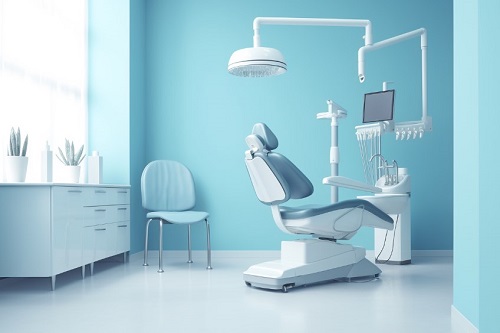Why Can Rare-earth Elements be used for Dental Coloring?
Yttrium stabilized zirconia is one of the most common ceramic materials in our daily life. It has excellent mechanical properties at room temperature, biosafety, and low thermal conductivity, so it has become an ideal dental restorative ceramic material. However, if it is not treated with coloring, it will show a chalky color, which cannot meet the clinical requirements for dental color matching.
In order to achieve the color effect of natural teeth, the material will be colored when used in the clinic. Rare earth elements have unique optical properties, good hair color and stable color, and have been widely used in ceramics. However, when applied to dental materials coloring, consideration should be given to the range of chromaticity that conforms to the natural teeth and the limitation of the properties of some elements. Currently, there are not many rare earth elements applied to dental coloring, mainly Ce, Pr, Er, Nd, etc.
Coloring method of rare earth stain
Immersion coloring
In order to achieve the color rendering effect of natural teeth, pre-burnt body immersion method is often used in clinical practice to dye the prosthesis, that is, to color the zirconia blanks after pre-sintering. The dyeing method is simple to operate, but it is easy to be uneven, which is greatly affected by the operation. At present, many dyeing solutions on the market are mainly made of rare earth elements.

Powder blending
Powder blending method is to mix coloring agent with the initial powder before high-temperature sintering of zirconia. At high temperature, coloring ions enter the ZrO2 lattice in the form of the solid solution and show color. This method avoids the uneven coloring caused by different factors, such as the thickness of the preheated body, microstructure, and clinical coloring process, and has little effect on the brightness of the material. However, the properties of sintered materials are affected by the modification of zirconia powder when the coloring agent is doped.
Effects of rare earth element coloring on properties of materials
There are two important requirements for dental ceramics in the clinic, one is mechanical property, and the other is biological safety. Zirconia ceramics have excellent performance in both aspects, but the properties of the crystal phase and density of the materials are affected by the doping of the stain. Therefore, it is necessary to minimize the impact on the properties of the materials while beautifying them with rare earth coloring agent.
Changes in mechanical properties
Studies have shown that the maximum bite strength of human posterior teeth can reach 700 N or higher, so the bending strength of ceramic materials applied in clinical prostheses should be above 800 MPa. According to the results of the present study, the addition of trace elements can have a certain impact on the mechanical properties of zirconia. However, as long as the content of colored oxide is controlled properly, its clinical effect will not be affected, and sometimes some stains will increase its mechanical properties.
Study on cytotoxicity of colored materials
Before clinical application, medical biomaterials need to undergo scientific biosafety testing, and the cytotoxicity is one of the important indexes of biosafety. The rare earth elements used for the coloring of dental all-ceramic materials are mainly the light rare earth group. Although there may be some toxicity of light rare earth, the low concentration of light rare earth has significant anti-cancer and anti-mutagenesis effects, and its addition as the colorant is extremely minor.









